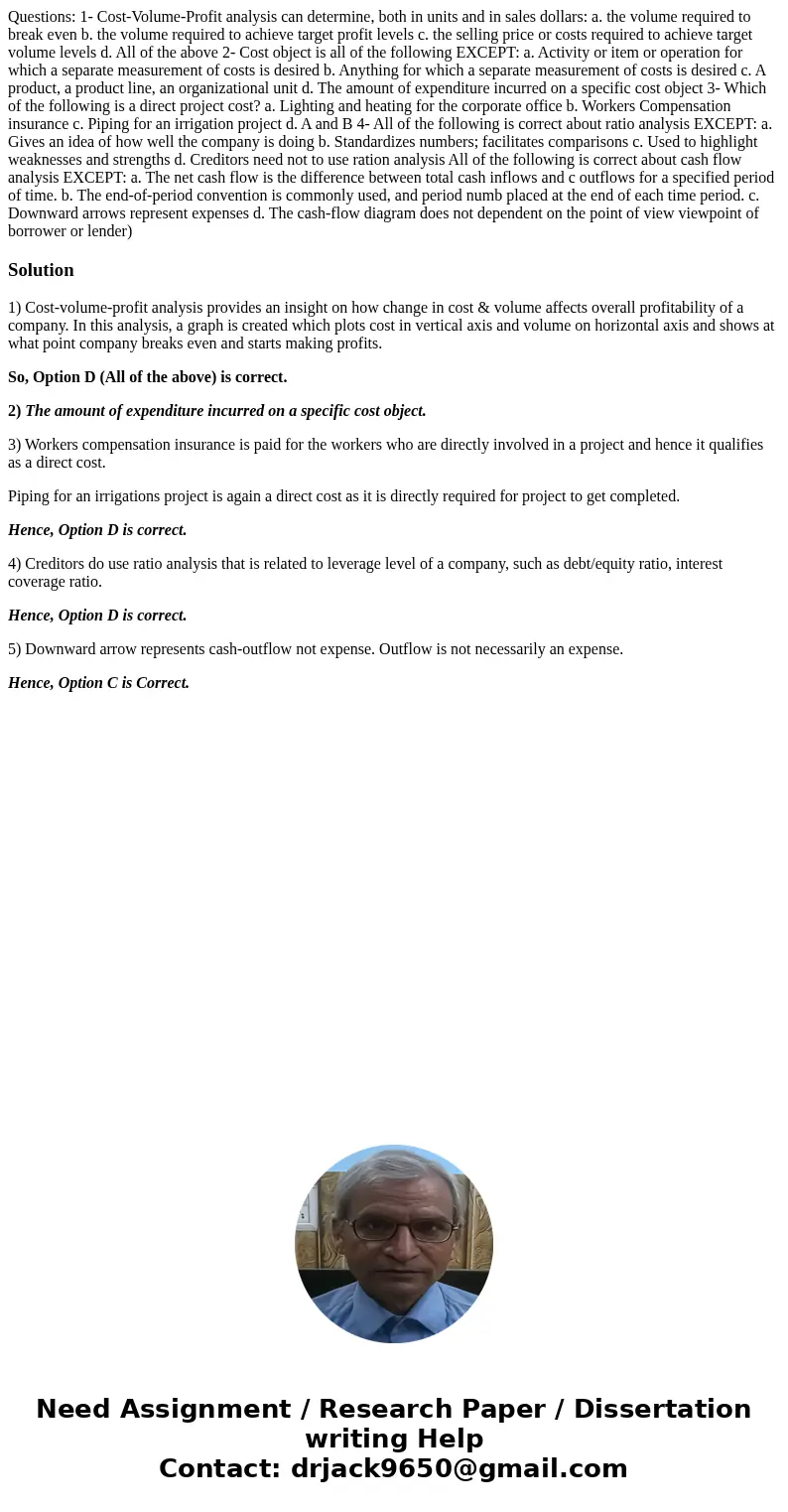Questions: 1- Cost-Volume-Profit analysis can determine, both in units and in sales dollars: a. the volume required to break even b. the volume required to achieve target profit levels c. the selling price or costs required to achieve target volume levels d. All of the above 2- Cost object is all of the following EXCEPT: a. Activity or item or operation for which a separate measurement of costs is desired b. Anything for which a separate measurement of costs is desired c. A product, a product line, an organizational unit d. The amount of expenditure incurred on a specific cost object 3- Which of the following is a direct project cost? a. Lighting and heating for the corporate office b. Workers Compensation insurance c. Piping for an irrigation project d. A and B 4- All of the following is correct about ratio analysis EXCEPT: a. Gives an idea of how well the company is doing b. Standardizes numbers; facilitates comparisons c. Used to highlight weaknesses and strengths d. Creditors need not to use ration analysis All of the following is correct about cash flow analysis EXCEPT: a. The net cash flow is the difference between total cash inflows and c outflows for a specified period of time. b. The end-of-period convention is commonly used, and period numb placed at the end of each time period. c. Downward arrows represent expenses d. The cash-flow diagram does not dependent on the point of view viewpoint of borrower or lender)
1) Cost-volume-profit analysis provides an insight on how change in cost & volume affects overall profitability of a company. In this analysis, a graph is created which plots cost in vertical axis and volume on horizontal axis and shows at what point company breaks even and starts making profits.
So, Option D (All of the above) is correct.
2) The amount of expenditure incurred on a specific cost object.
3) Workers compensation insurance is paid for the workers who are directly involved in a project and hence it qualifies as a direct cost.
Piping for an irrigations project is again a direct cost as it is directly required for project to get completed.
Hence, Option D is correct.
4) Creditors do use ratio analysis that is related to leverage level of a company, such as debt/equity ratio, interest coverage ratio.
Hence, Option D is correct.
5) Downward arrow represents cash-outflow not expense. Outflow is not necessarily an expense.
Hence, Option C is Correct.

 Homework Sourse
Homework Sourse